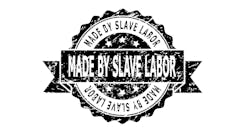Commentary / Analysis
The federal annual statistical report on labor union membership shows them losing ground because overall membership as a percentage of the workforce shrank even in the face of numbers added as the result of large-scale, expensive organizing campaigns and the Biden administration and Democrats in state governments giving them total support. Last year’s reports that public opinion had turned around to view unions favorably apparently haven’t helped.
Although there nothing in the way of concrete evidence to draw a conclusion about why this has happened, fingers have pointed at a well-known culprit: the COVID-19 pandemic and the damage it did to the economy. Changes in the structure and make-up of the workforce, remote working and more freelance and gig work also may have played significant roles.
According to the Bureau of Labor Statistics (BLS), the percent of wage and salary workers who were members of unions was 10.1% in 2022, down from 10.3% in 2021. That is not a big amount, but it should be worrisome for labor leaders who have invested so much in trying to expand union membership, which they managed to do in absolute terms.
“The number of wage and salary workers belonging to unions, at 14.3 million in 2022, increased by 273,000, or 1.9%, from 2021. However, the total number of wage and salary workers grew by 5.3 million (mostly among nonunion workers), or 3.9%,” BLS said. “This disproportionately large increase in the number of total wage and salary employment compared with the increase in the number of union members led to a decrease in the union membership rate.”
In addition, the BLS pointed out in its report that the 2022 unionization rate (10.1%) is the lowest on record. In 1983, the first year where comparable union data are available, the union membership rate was 20.1% and there were 17.7 million union workers.
It looks even worse when you realize that union membership among public-sector workers (33.1%) continues to be more than five times higher than the rate of private sector union workers who are members of unions, which continues to be stuck at 6.0%.
According to the bureau’s report, Hawaii and New York remain the states that have the highest union density, with their union membership rates landing at 21.9% and 20.7%, respectively. By contrast, the Carolinas posted the lowest unionization rates, with South Carolina at 1.7% and North Carolina coming in at 2.8%.
The stagnation of private sector membership was not for want of trying on the part of the unions, seeing their best opportunity in years with the active support of the Biden administration. The 2,510 union representation petitions filed with the National Labor Relations Board (NLRB) in FY 2022 were a 53% increase from the 1,638 petitions that were filed in FY 2021.
Worker Reluctance Persists
But there’s another possibility. Although public opinion surveys show the general public, and especially young people, may think better of the unions in general, that doesn’t mean they want to turn over a big chunk of their paychecks to union leadership. Some worker surveys also have found that 58% of non-unionized workers have contended that they are “not interested at all” in the prospect of joining a union.
The unions’ most recent high-profile campaigns have sought to organize workers at Amazon fulfillment centers and Starbucks coffee stores. But these efforts are continuing to proceed with decidedly mixed results in spite of all the news coverage they have attracted. There even have been reports that employees at some of the Starbucks outlets that already have been organized are seeking to decertify union representation.
Good luck with that: The NLRB recently changed its rules to make it virtually impossible for already-organized employees to cut the cord with their unions. It has long been established that a decertification vote cannot be held while an Unfair Labor Practice (ULP) charge filed by the union with the board against an employer is pending. In the past, unions would simply choose to file one ULP after another, no matter how frivolous, so that no decertification vote would ever be held. The Trump-era board removed this extraordinary burden, but under the Biden board, that door again has been slammed shut for employees.
As a result, it is easier to get a divorce in the United States than it is for workers to leave a union once it has organized their workplace.
The NLRB also has worked hard over the last few years to give the unions a leg up in pursuing their organizing goals by reintroducing the “micro union” concept. This allows a union to organize a small number of specialized employees, like janitors, within a workplace, which helps the union get its foot in the door. Another recent board decision also makes it easier for union organizers to enter physical premises without management permission, and another reduced the time management has to mount a campaign against union representation after an election has been requested and before the vote is held.
However, there is a very real question about how much of a help some of these changes have been for the unions. In the past, micro unions have proven to be little or no help in expanding membership. In one case, after the union failed to organize an auto plant, it officially announced that it was withdrawing from representation of the small number of maintenance workers who it had organized earlier. I’m sure they were thrilled.
Unions also are continuing their war on independent contractors, but once again that has turned out to be a double-edged sword. California’s AB 5 law bore down heavily on freelancers and independent truckers, stirring up anger and resentment against the unions and their supporters in the state legislature. The NLRB’s drive to establish joint employer responsibility for franchisers and their parent companies has yet to yield results for the unions.
As hard as it may be for union supporters to believe, there are some people who simply don’t want to be members of unions, or see a substantial amount of money taken out of their paychecks to go to political causes they don’t agree with, or organizing campaigns that do nothing to help those who are paying the dues.




